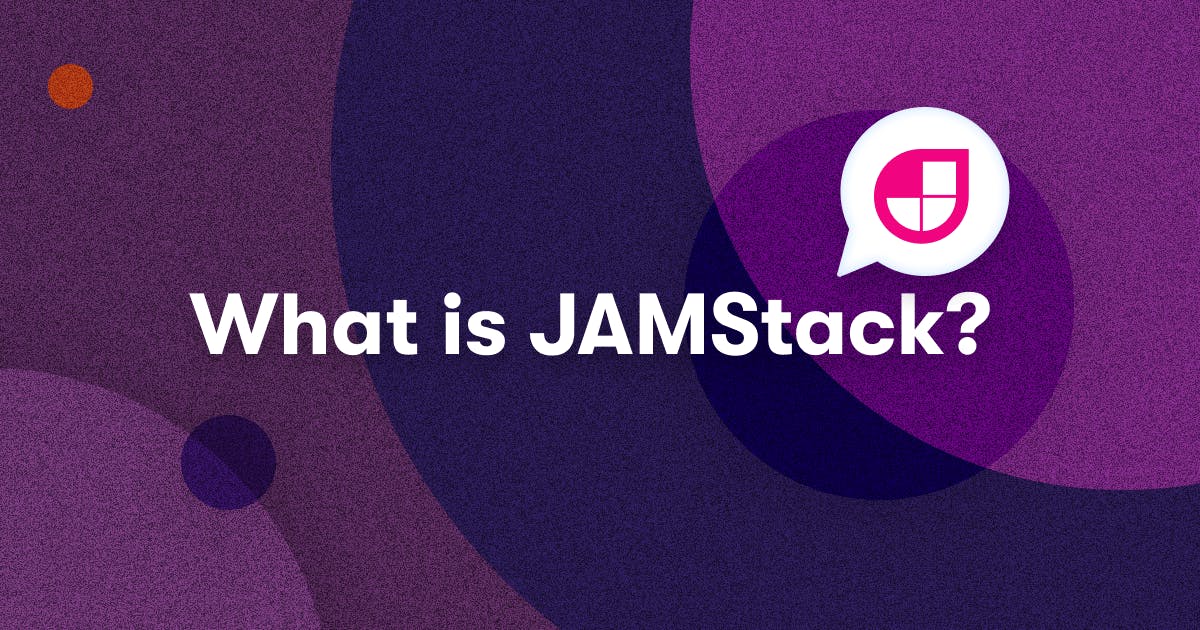December 31, 2025
What is JAMStack? A Practical Guide to Modern Web Development

Mohammad Kausar

“Why do so many websites still feel slow, fragile, or difficult to maintain, even with modern tools?”
“Why does scaling a website often introduce more complexity instead of simplicity?”
These are common questions developers, product teams, and site owners ask today. The answer increasingly points to a modern web architecture called JAMstack.
JAMStack is not a trend or a single framework. It is a practical way to build fast, secure, and maintainable websites using modern tools and workflows. In this guide, you’ll learn what JAMstack is, how it works, its real-world usability, and when it makes sense to use it.
What is JAMStack?
JAMstack stands for JavaScript, APIs, and Markup. It is a modern web development architecture where pages are built ahead of time and served as static files, while dynamic functionality is handled through APIs.
Unlike traditional websites that generate pages on every request, JAMstack sites are prebuilt during deployment. This results in faster performance, better security, and simpler maintenance.
Breaking Down JAMstack
- JavaScript: Handles interactivity in the browser using frameworks like React, Vue, or Svelte.
- APIs: All dynamic features, such as authentication, payments, search, or forms, are handled through reusable APIs.
- Markup: Pages are generated as static HTML at build time using modern frameworks.
JAMStack focuses on decoupling the frontend from the backend, which makes applications easier to scale and manage.
How JAMStack Works: From Build to Browser
Understanding how JAMstack works helps explain why it feels so fast and reliable.
- Content and data are fetched at build time: Content comes from headless CMS platforms or APIs.
- Pages are generated as static files: HTML is created once during deployment.
- Files are served through a CDN: Content is delivered instantly from servers close to users.
- Dynamic features use APIs: JavaScript calls APIs only when interaction is needed.
This workflow removes server bottlenecks and runtime complexity.

What is a Static Website?
Why JAMstack Is Easy to Use
One of the biggest reasons JAMstack is growing in popularity is usability, both for developers and teams managing websites.
1. Simple and Clean Project Structure
JAMstack projects separate concerns clearly:
- Frontend code lives in one place
- Backend logic lives in APIs
- Content is managed independently
This makes projects easier to understand, debug, and extend over time.
2. Developer-Friendly Tooling
JAMStack works seamlessly with popular frameworks such as:
These tools offer fast builds, hot reload, and a modern developer experience.
3. Flexible Content Management
With headless CMS platforms, content teams can:
- Update content without touching code
- Publish changes safely
- Reuse content across platforms
This improves collaboration between developers and non-technical teams.
JAMstack vs Traditional Web Development
Traditional websites often rely on tightly coupled backend systems that:
- Generate pages on every request
- Requires constant server maintenance
- Increase security risks
JAMstack removes much of that complexity:
- Pages are prebuilt
- No database or server logic runs on page load
- Infrastructure is simpler and more reliable
This difference is why JAMstack sites often feel faster and more stable.
“JAMstack development is not just about building faster websites; it’s about creating systems that scale securely, adapt quickly, and let businesses grow without technical bottlenecks. When architecture is simple, innovation moves faster.”
— M. Kausar, Co-Founder & Core Developer, StaticMania
Pros & Cons of JAMstack
Here are the key advantages that make JAMstack a popular choice in modern web development. JAMStack is powerful, but it is not perfect for every use case.
| Pros | Cons |
|---|---|
|
|
Common Use Cases for JAMstack
JAMstack works best for sites where performance, stability, and maintainability are most important.
Popular use cases include:
- Marketing websites
- Blogs and content platforms
- Documentation sites
- Headless eCommerce stores
- SaaS product websites
- Portfolio and brand sites
Popular JAMstack Tools
A typical JAMstack setup includes:
Frameworks
- Next.js
- Astro
- Gatsby
- Nuxt
CMS Platforms
Hosting Providers
APIs
- Authentication
- Payments
- Search
- Analytics
This modular ecosystem gives teams flexibility without lock-in.
When JAMstack Is a Good Choice
JAMstack is a strong choice when you need:
- Fast page loads
- SEO-friendly architecture
- Scalable infrastructure
- Clean separation of concerns
- Long-term maintainability
It may not be ideal for applications that require constant real-time server processing.
How StaticMania Builds Usable JAMstack Websites
At StaticMania, JAMstack is not just a technology choice; it is a development philosophy.
We focus on:
- Performance-first architecture
- Clean and scalable codebases
- Headless CMS integration
- SEO-optimized builds
- Long-term maintainability
Our team builds JAMstack websites that are not only fast but also easy to manage and scale.
Conclusion: Is JAMstack Right for You?
JAMStack represents a practical shift toward faster, simpler, and more maintainable websites. By separating content, logic, and presentation, it removes much of the complexity found in traditional web development.
If your goal is performance, scalability, and a clean development experience, JAMstack is a strong choice.
At StaticMania, we help teams design and build high-performance JAMstack websites tailored to real-world needs. If you are planning a new site or migrating to JAMstack, our experts are ready to help you build it the right way. Make an appointment to know how we explore your visibility.
Frequently Asked Questions About JAMstack
Yes. JAMstack websites are highly SEO-friendly because pages are pre-rendered as static HTML and served via CDNs. This results in faster load times, better Core Web Vitals, and improved crawlability for search engines like Google.
JAMstack has a learning curve, especially for teams new to headless architecture. However, developers familiar with JavaScript frameworks like React, Vue, or Next.js can adopt JAMstack quickly using modern tools and documentation.
No. JAMstack does not replace CMS platforms. Instead, it works with headless CMS solutions such as Sanity, Contentful, or Strapi, allowing content management to stay flexible while the frontend remains fast and secure.
Yes. JAMstack supports dynamic functionality through APIs and client-side JavaScript. Features like authentication, search, forms, eCommerce checkout, and personalization are commonly handled using serverless or third-party APIs.
Yes. JAMstack websites are generally more secure because there is no direct database or server logic exposed at runtime. This reduced attack surface lowers the risk of common security vulnerabilities.
JAMStack is ideal when performance, scalability, security, and maintainability are top priorities. It works best for marketing sites, content-driven platforms, headless eCommerce, and modern web applications that rely on APIs.
Yes. JAMStack scales well for large websites when built with proper architecture, caching strategies, and incremental builds. Many enterprise-level websites use JAMstack to deliver fast, global experiences.
Content Confirmation:
This article was written and reviewed by M. Kausar, Co-Founder and Core Developer, StaticMania.

